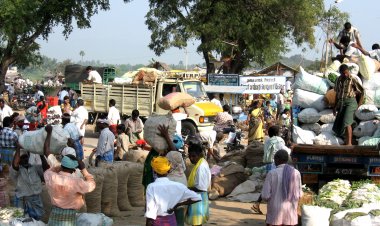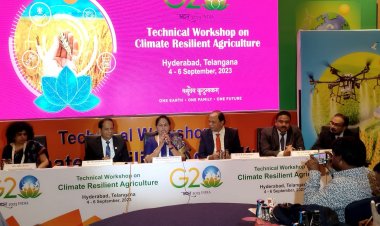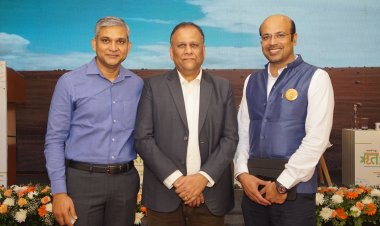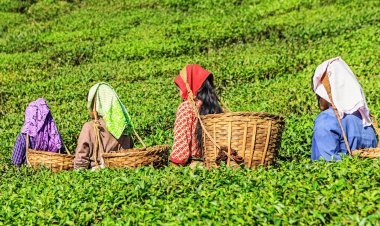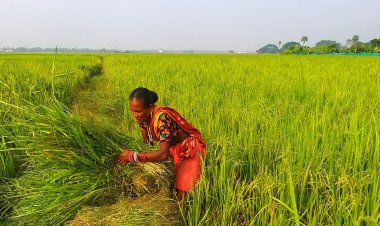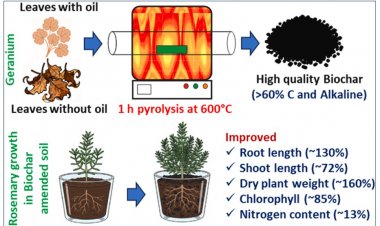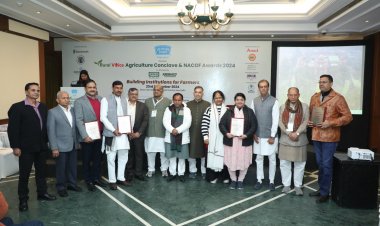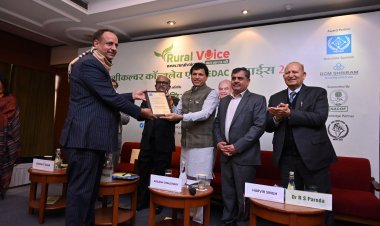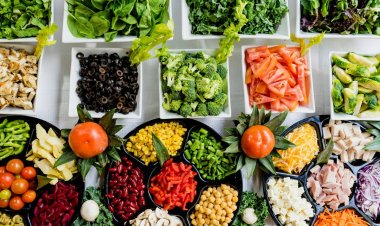No success on land or space without scientific innovations
Our average yields of pulses and oilseeds are lower than the global average. Increasing yields of pulses and oilseeds and raising the domestic production is, therefore, an important challenge to be met urgently. For increasing both production and productivity, the genetic modification (GM) is a disruptive innovation that has been used successfully in more than 30 crops globally. The first GM crop grown in the farmer’s fields was in 1996. GM maize, soybean, canola, cotton and others are now grown over 200 million hectares in 29 countries, including Bt cotton in India, with no adverse reports on environment and human health.

Recent success of Chandrayan-3 landing on moon has raised our heads high. A similar success was achieved in the late sixties through Green Revolution to meet the food demand for our burgeoning population, needing then an import of around 10 million tonnes annually -bought as loan (under PL 480) from the United States. Today, with 4.5-fold increase in population (1.43 billion) and having become the most populous country in the world, overtaking China, we have been able to produce almost 6.5-fold food grains (330.5 million tons).
Our buffer stocks have been ranging between 50-70 million tonnes for more than a decade. Thanks to silent realisation of Evergreen Revolution, this has made us Atmanirbhar despite additional global concern for food security on account of COVID-19 pandemic and on-going war between Russia and Ukraine which added 157 million people to an earlier number of 800 million food insecure globally. In contrast, India is self-sufficient in food grains taking care of its food requirement – thanks to our agricultural scientists, extension personnel and the receptive farmers. This could be possible because of our strong national agricultural research system (NARS). India is now the largest producer of milk, pulses, cumin, guar, banana, etc. and the second largest for rice, wheat, fruits, vegetables, and cotton. As an outcome of these advances, our annual agricultural exports have also risen now to US $ 55 billion.
Obviously, such achievements, whether in space or on land, could have not been possible without scientific excellence and the cradles of success such as: i) policy support and political will, ii) institutions (ICAR, ISRO, CSIR, etc.), iii) human resource, and iv) partnership.
Despite above achievements, there are still some shortfalls for which we have to resort to imports. During the financial year 2022-23, India imported 13.54 million tonnes of vegetable oils valued at INR 167,200 crore and 2.52 million tonnes of pulses valued at INR 15,780.73 crore to meet the domestic demand. Our average yields of pulses and oilseeds are lower than the global average. Increasing yields of pulses and oilseeds and raising the domestic production is, therefore, an important challenge to be met urgently. For increasing both production and productivity, the genetic modification (GM) is a disruptive innovation that has been used successfully in more than 30 crops globally. The first GM crop grown in the farmer’s fields was in 1996. GM maize, soybean, canola, cotton and others are now grown over 200 million hectares in 29 countries, including Bt cotton in India, with no adverse reports on environment and human health.
Thanks to the foresight and bold policy decision of the government in 2002, we in India could release Bt cotton to help farmers increase their production and reduce pesticide use, which was almost 50 per cent of the total pesticides consumed in agriculture at that time. As a result, India could witness Fibre Revolution and we not only became second largest producer of cotton globally but became a major exporter. Thanks to this technology, we also increased cotton area from 8 to 12 million hectares, produced almost three-fold more cotton and increased yield per hectare by two-fold. The pesticide consumption also got reduced by almost 40 per cent. As a consequence, most cotton farmers being smallholders increased their income and embraced the technology enthusiastically, contrary to the doubts expressed by those who are anti GM.
Unfortunately, unfounded concerns propounded by those against had put in stumbling blocks for the adoption of other GM food crops, thus depriving the farmers to improve production and productivity of maize, soybean, mustard brinjal etc. It is relevant to mention here that an intensive review of the GM technologies and release of GM crops has been carried out globally by several scientific academies, namely, the National Academy of Sciences, USA; the American Association for the Advancement of Science; the Royal Society, London; the African Academy of Sciences; European Academies Science Advisory Council; American Medical Association; Union of German Academics of Science and Humanities, and even the European Commission. All these academies have concluded that release of GM crops is safe for humans, animals, and the environment.
In an article in the Current Science in 2019, eminent agricultural scientists from India also pointed out that "challenges would always arise in sustaining productivity, and scientists should have the space and access to address the concerns and come up with newer solutions. In this regard, no one should champion to dispense with regulatory issues of safety to health and environment.
Fortunately, the regulatory bodies in India follow one of the strictest protocols for evaluation. While the scientists develop new technologies, the experts need to evaluate through strict regulatory regime so as to facilitate a quick policy decision regarding release and adoption of new GM innovations, whether based on transfer of a new gene from outside or by precisely changing an existing gene, on case-to-case basis”. In 2018, as many as 129 Nobel Laureates joined a campaign to convince the Green Parties that GMOs are safe and be supported to address food and nutrition security so important in the developing world.
After an unfortunate embargo put in by previous Government almost ten years ago, a bold decision was taken last year (18 October 2022), by the Ministry of Environment, Forest and Climate, based on the recommendations of GEAC, to release transgenic mustard hybrids DMH-11 and its parental lines, developed in India by the scientists at the Centre for Genetic Manipulation of Crop Plants, University of Delhi. The three transgenes (bar – a marker gene that confers resistance to post-emergence herbicide Basta; barnase – which causes male sterility; and barstar- which helps in fertility restoration) used by them have already been used in rapeseed, a sister crop of mustard in Canada. In fact, GM rapeseed hybrids are under cultivation in Canada since 1996, in the US since 2002 and in Australia since 2003. There are no reports of any harmful effects on the environment and human health due to their cultivation and use. As such, we are already two decades behind in reaping the benefits of this highly potential technology and are importing canola oil from Canada to meet our food demand since long. With the release of GM mustard, aiming to be self-reliant in oilseeds, paves way to develop new promising hybrids in the country by our plant breeders to increase both production and productivity.
For achieving the two important Sustainable Development Goals (SDGs), viz., zero hunger, and good health and well-being by 2030, the challenge is to produce and provide access to nutritious food, for around 200 million people below poverty and around 43 lakh children below 5 years of age who are malnourished. In addition, the challenges of declining natural resources (land, water, air and agrobiodiversity) and adverse impact of climate change on global food security, with rising temperature and increasing frequency of floods and drought need to be effectively addressed. Also, cultivation of GM crops like GM Maize and GM Soybean will undoubtedly help in addressing these concerns at the national level and contribute towards higher income and reduced poverty. We, therefore, must have an aggressive approach and create a much-needed enabling environment for public-private partnership to embrace new technological advances in the larger national interest.
It is hoped that Hon’ble Supreme Court will uphold the science based, well examined by a robust regulatory system, the decision of the Government aiming at achieving self-sufficiency in oilseeds and promoting 'Make in India' technology evolved by the public system will immensely help the country to become Atmanirbhar. Our main goal must be to see that nobody goes to bed hungry and live below poverty line as envisaged in SDGs to be achieved by 2030 - for which time is running out. The GM Mustard technology be tested extensively on farmers’ fields in the current season which is on presently. Any further delay will mean loosing one year for this disruptive innovation to land. In conclusion, the choice before us is either to continue importing oil for human consumption at very high cost or to meet the demand by producing internally on our land.
(The author is a Padma Bhushan Awardee, former Director General, ICAR and Secretary, DARE and former President, Indian Science Congress.)



 Join the RuralVoice whatsapp group
Join the RuralVoice whatsapp group

















